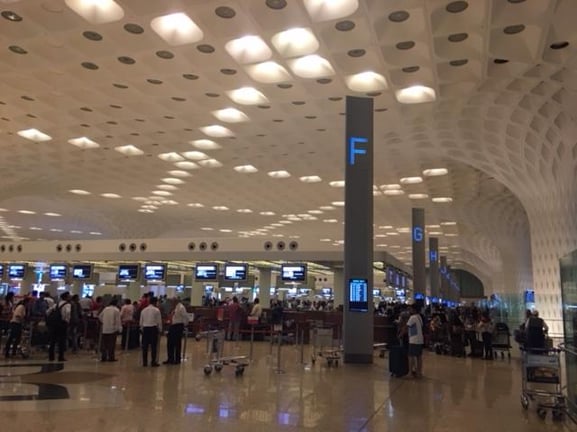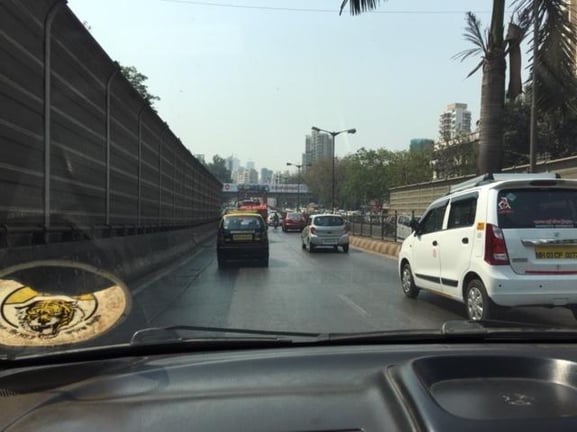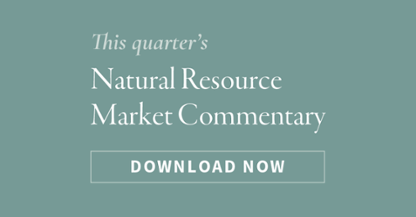 I vividly remember arriving in Mumbai for the first time back in the fall of 2007. As we landed, the slums surrounding the airport were barely visible through the thick haze that enveloped the city. The guidebook warned that clouds of malarial bearing mosquitos inhabited the standing water around the airport, only adding to the third world experience. The airport was frozen in time. The faded walls were covered in a thick layer of soot, and I remember the heat in the packed arrivals terminal – air conditioning was not yet installed.
I vividly remember arriving in Mumbai for the first time back in the fall of 2007. As we landed, the slums surrounding the airport were barely visible through the thick haze that enveloped the city. The guidebook warned that clouds of malarial bearing mosquitos inhabited the standing water around the airport, only adding to the third world experience. The airport was frozen in time. The faded walls were covered in a thick layer of soot, and I remember the heat in the packed arrivals terminal – air conditioning was not yet installed.
The roads were in poor shape, and most vehicles on the road were two-wheelers. The taxis were all decades-old and certainly worse for the wear. They were exclusively Tata’s as were most of the other vehicles on the road. When the traffic ground to a halt, swarms of beggars (including young girls carrying infants and young boys purposely blinded for job) banged on the windows, asking for money. Some children were selling copies of Rudyard Kipling’s “Kim.”
Millions lived either in vast slums or just outright in the streets. I have been to many third world countries (including some of the poorest of West Africa), but even I was taken aback by our first experience to India.
In 2007 the country had only just surpassed $900 in real per capita GDP. Over the next four years, I would return to India three more times and traveled extensively taking in its slow and often-times frustrating march forward.
My partner, Adam Rozencwajg, and I decided to return to India to observe how it developed since I was last here. Real per capita GDP, has grown by over 7% per year over the last decade and is now approaching $2,000. The differences were astounding. The old airport has been replaced with an ultra-modern one as part of a nation-wide infrastructure program.
The new airport now handles over 45 million passengers each year and looks like it belongs in Singapore or Dubai. The only problem with the new airport is that it is already testing its terminal capacity. Strong economic growth combined with a robust low-cost carrier network has resulted in a sharp increase in Indian air travel.
As compared to 2007, the roads were well paved in every city we visited (Mumbai, Delhi, Ahmedabad and Kochin) and the bulk of the traffic was from automobiles. The two-wheelers that remained were mostly motorcycles instead of scooters. There was much less human and animal traffic. Thankfully, the number of young beggars on the roads was drastically less.

Our models tell us that after over a decade of strong growth, India is at the same point today as China was in 2003. If we are correct then Indian commodity demand is set to explode over the coming 15 years. We decided to travel to India to see first-hand whether our models were accurate.
Over the next few weeks (and in our next quarterly letter), we will go over all of our results in great detail. The reality in India is more exciting than we had even realized. Please check back often for more of our market insights.
Using our comment section below, please share your thoughts or questions on anything related to commodities. We welcome the dialogue!
~Leigh Goehring


